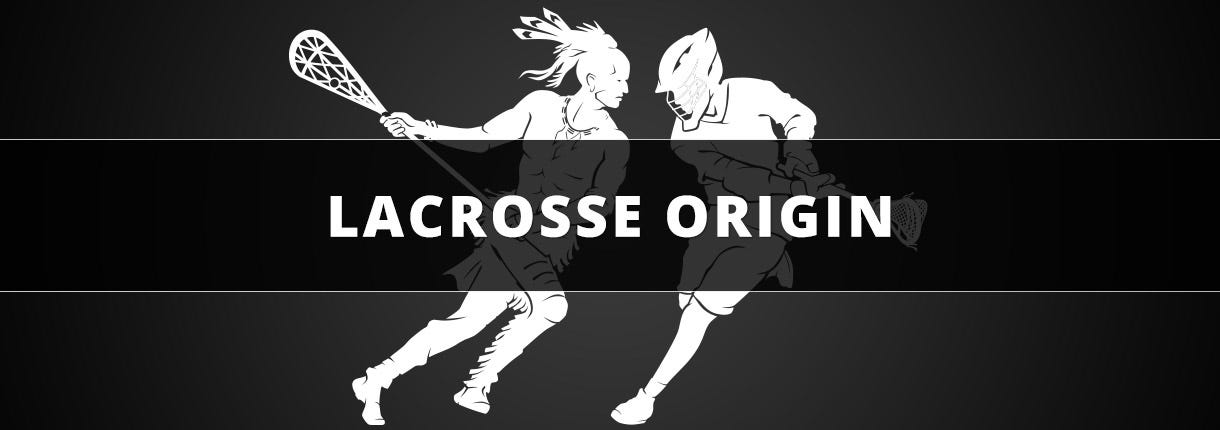History of Lacrosse: Origins, Traditions, and Evolution

Lacrosse originated as a tribal game played by Native American communities, primarily in the Eastern Woodlands of the United States and among tribes in what is now southeastern Canada. Known as "The Creator's Game," it was used for conflict resolution, training, and religious celebration, and has evolved into a formalized sport played worldwide.
Introduction to Lacrosse Origins
Lacrosse, with its profound history rooted in Native American culture, has evolved into a globally recognized sport. From its ceremonial and community-centric origins to its status today as a fast-paced, competitive game, lacrosse's journey is a testament to its enduring appeal and cultural significance. This article provides a comprehensive guide to understanding lacrosse's origins, traditions, and how it has evolved.
Where Did Lacrosse Originate?
- Native American Roots: Tracing back to tribes like the Haudenosaunee (Iroquois) and others across the eastern woodlands of North America.
- Regional Variations: Diverse rules and playing styles reflect local traditions and purposes.
- Equipment and Scale: The evolution of the game's equipment and the scale of play varies among different tribes.
The Spiritual Significance of Lacrosse
Lacrosse was more than a game for Native American communities; it held profound spiritual and cultural significance. It was a ceremonial act to please deities, a means to resolve conflicts, and a way to train warriors.
- Ceremonial Aspect: Used to bring communities together and as an offering to the Creator.
- Training for Warriors: Mimicking the agility and strategy needed for battle.
When Did Lacrosse Become Popular?
Lacrosse caught the attention of European settlers, who adapted the game, eventually leading to the establishment of formal rules and the beginning of the sport’s transition into a modern, organized competition.
The Founding of the Montreal Lacrosse Club
- 1856 Founding: Marking a significant shift towards the standardization of rules.
- Pivotal in Organizing the Sport: The club played a key role in transforming lacrosse from a Native game to a sport with formal rules.
Organized Lacrosse Competition and Expansion
The early 20th century marked a significant era for lacrosse, with its introduction into the Olympic Games. This inclusion was pivotal, as it represented a recognition of lacrosse on an international sports stage. It first appeared in the 1904 St. Louis Olympics and again in 1908 in London. Though it was a demonstration sport, its presence in the Olympics played a critical role in expanding its appeal beyond North American shores.
The impact of lacrosse's Olympic appearances was profound. It sparked interest in countries where the sport was relatively unknown, laying the groundwork for its global expansion. In the ensuing decades, lacrosse began to establish a foothold in Europe, particularly in England, Scotland, and Wales, where national governing bodies for the sport were formed.
World Lacrosse Championship and Global Spread
The Inception of the Championship
The World Lacrosse Championship, first held in 1967 in Toronto, Canada, marked a watershed moment for the sport. This event was the first of its kind, providing a platform for lacrosse teams from different countries to compete on an international level. It was a significant step in elevating lacrosse from a regional pastime to a global sport.
Milestones in International Development
- 1967: The first World Lacrosse Championship in Toronto, featuring only four teams – the United States, Canada, Australia, and England. It set the stage for future international competitions.
- 1974 Expansion: The second championship, held in Melbourne, Australia, saw more countries participate, underlining the sport's growing popularity.
- 1980s and 1990s: The championships saw consistent growth in the number of participating nations, including teams from Japan and several European countries.
- 21st Century: Lacrosse witnessed an unprecedented spread, with the championships featuring teams from Asia, Africa, and more European countries. It reflected lacrosse's evolution into a truly global sport.
- 2014 Record Participation: The championship held in Denver, Colorado, saw a record 38 nations participate, a testament to lacrosse's widespread appeal.
- Women's Lacrosse Growth: Parallel to the men's game, women's lacrosse experienced similar growth with their own World Championship, further establishing the sport's global reach.
These milestones indicate lacrosse’s successful transition from a Native American tradition to a global competitive sport. The championship has not only been a celebration of skill and athleticism but also a symbol of the sport's unifying spirit, bringing together diverse cultures under the banner of lacrosse.
Lacrosse Origins - Frequently Asked Questions
Where is the origin of lacrosse?
Lacrosse originated among Native American tribes in the eastern woodlands of North America.
What are the major differences between traditional Native American lacrosse and the modern game?
The traditional game often involved large teams over expansive fields, with spiritual significance, compared to the modern, more regulated version.
Why does lacrosse have a French name?
The name 'lacrosse' comes from the French term 'la crosse', referring to the stick used in the game.
Is lacrosse the oldest sport in North America?
Lacrosse is considered one of the oldest team sports in North America, with roots in Native American culture.
What sport did lacrosse originate from?
Lacrosse did not originate from any other sport; it developed independently among Native American communities.






Login and Registration Form
or
Create an account